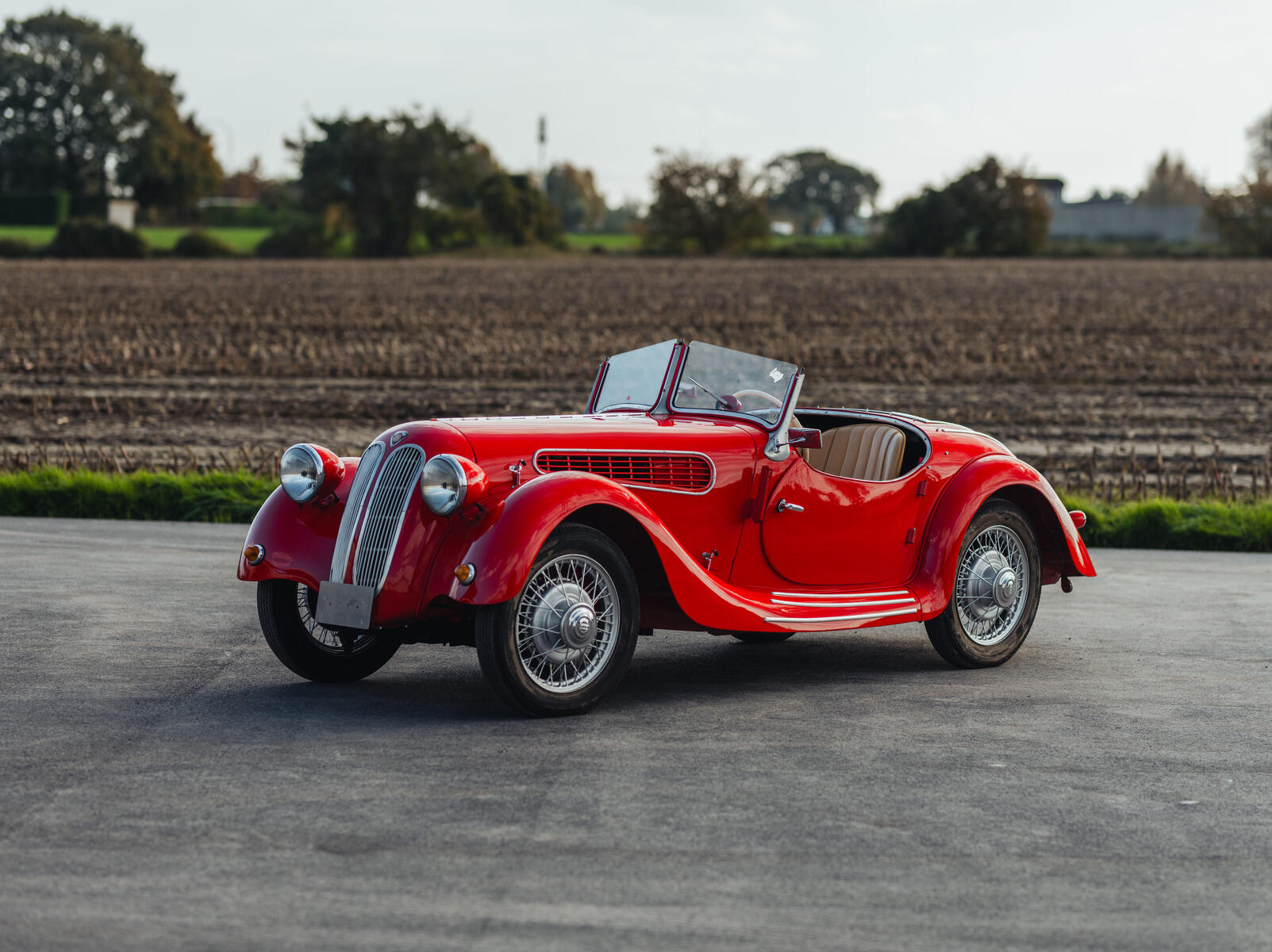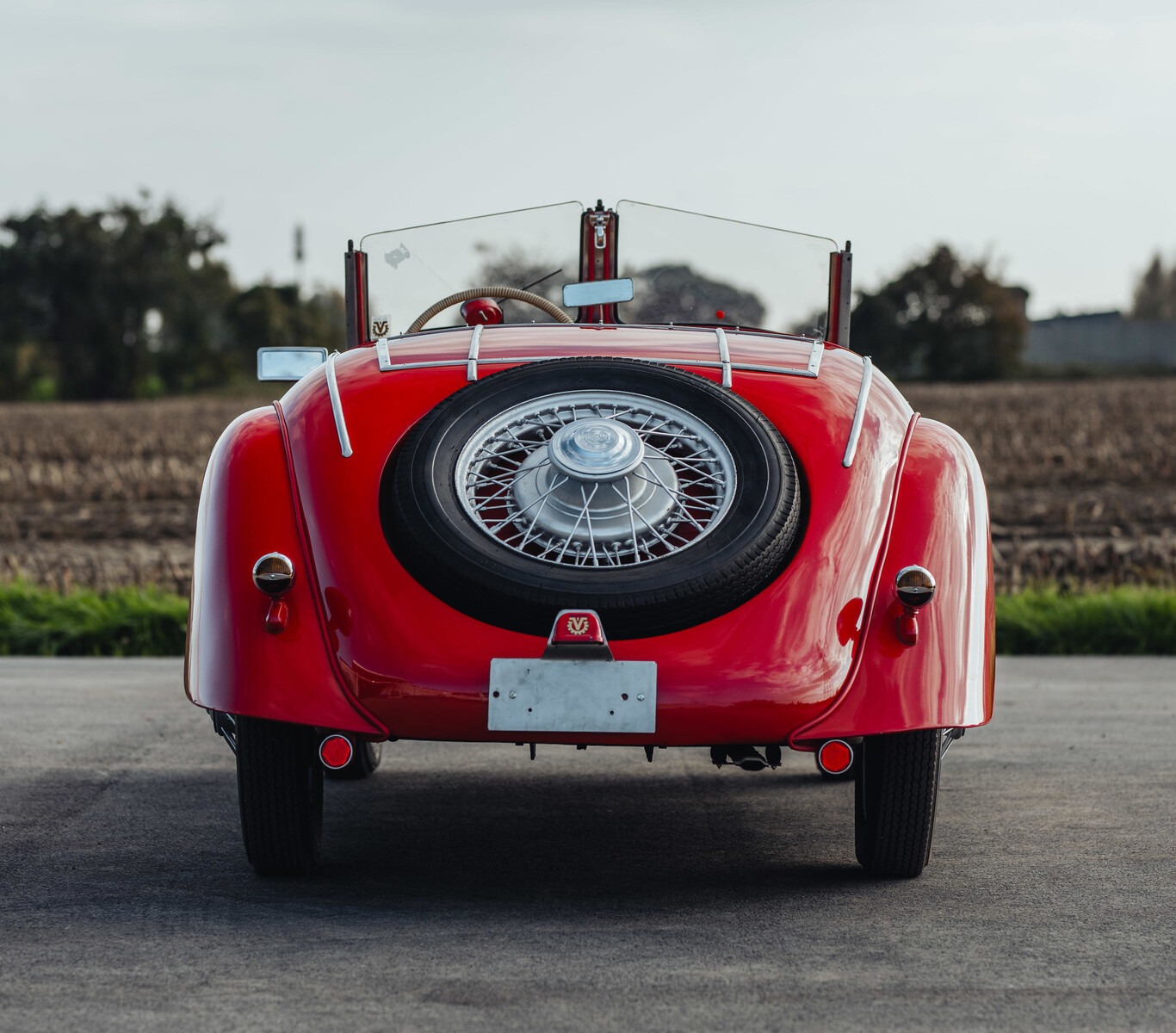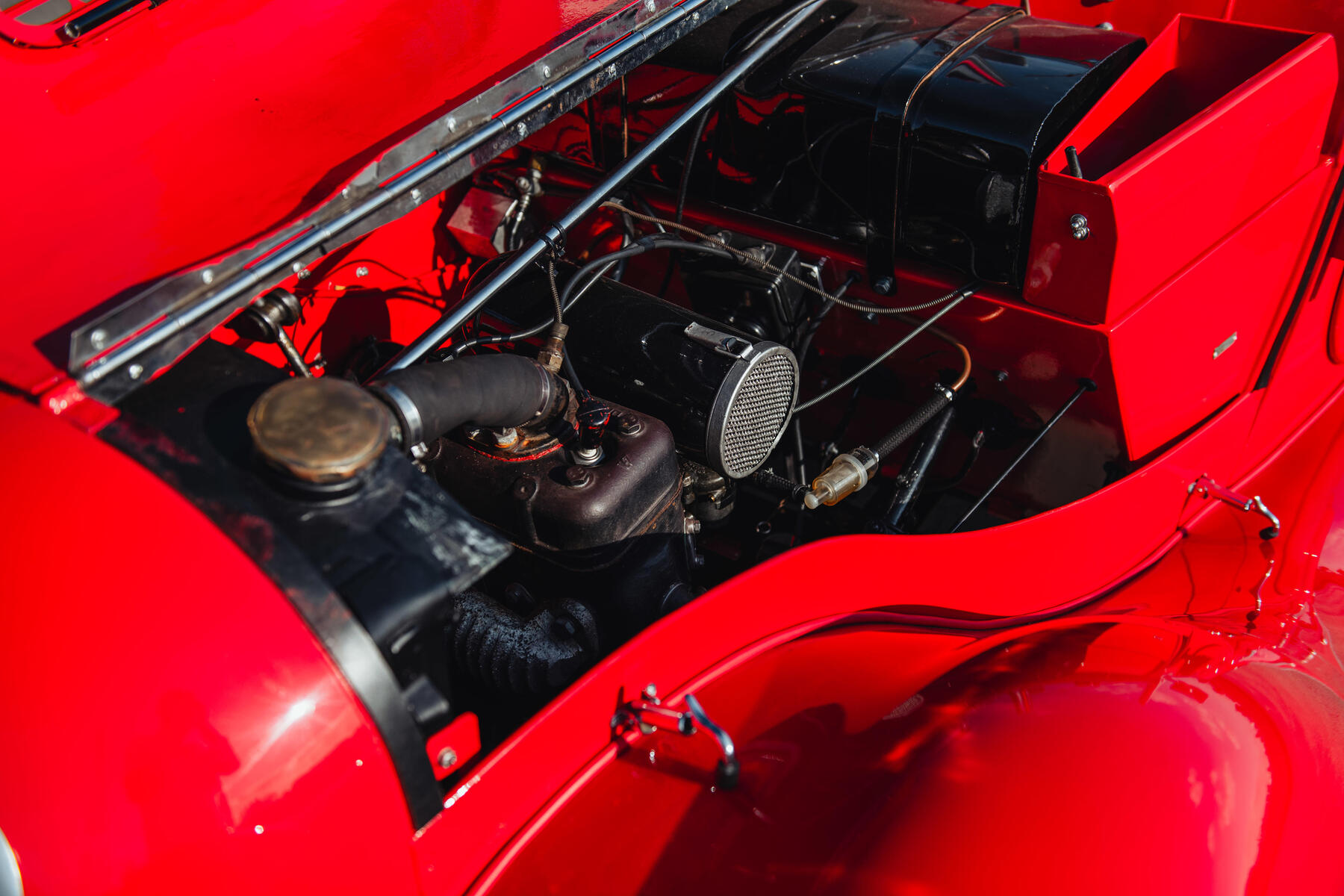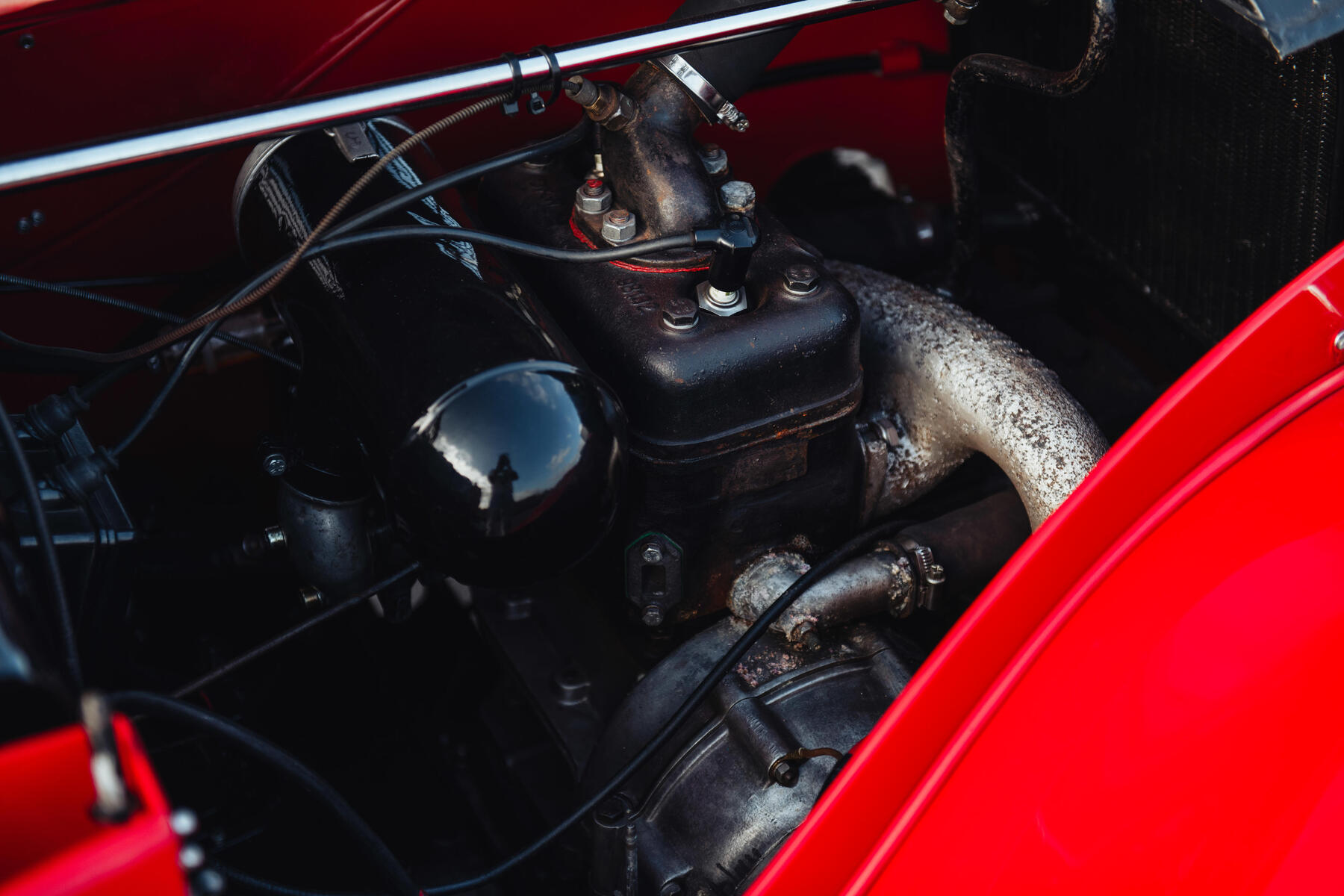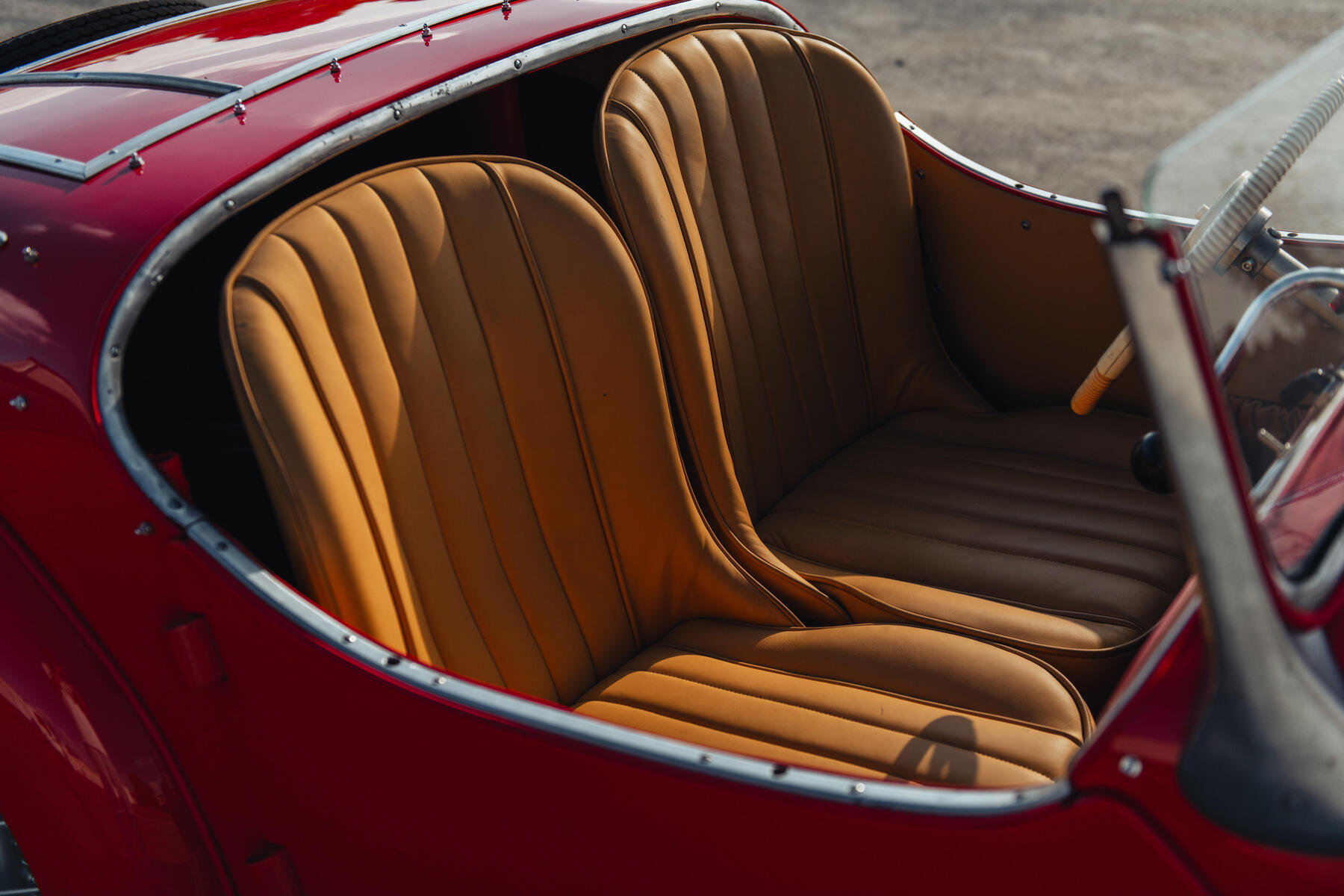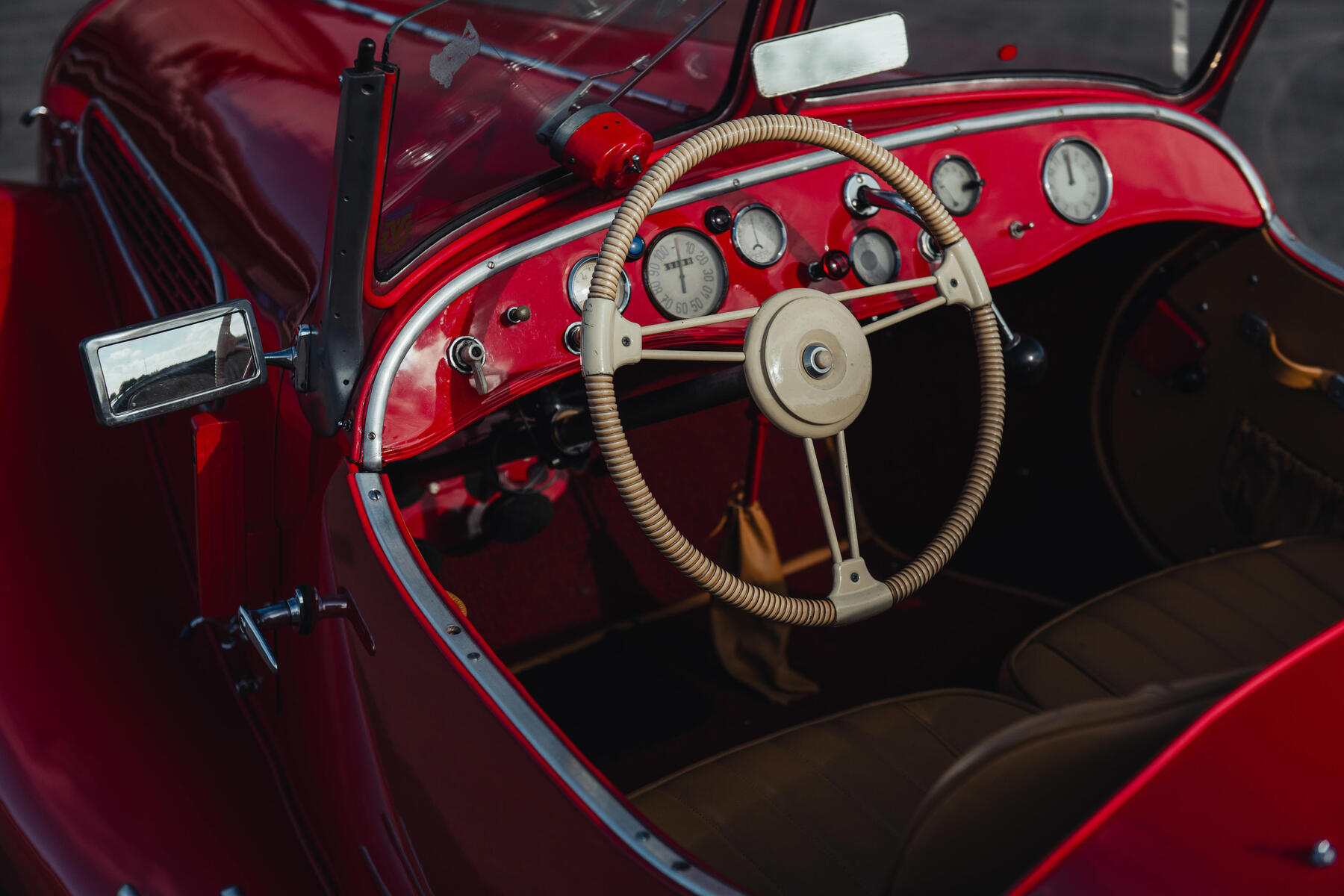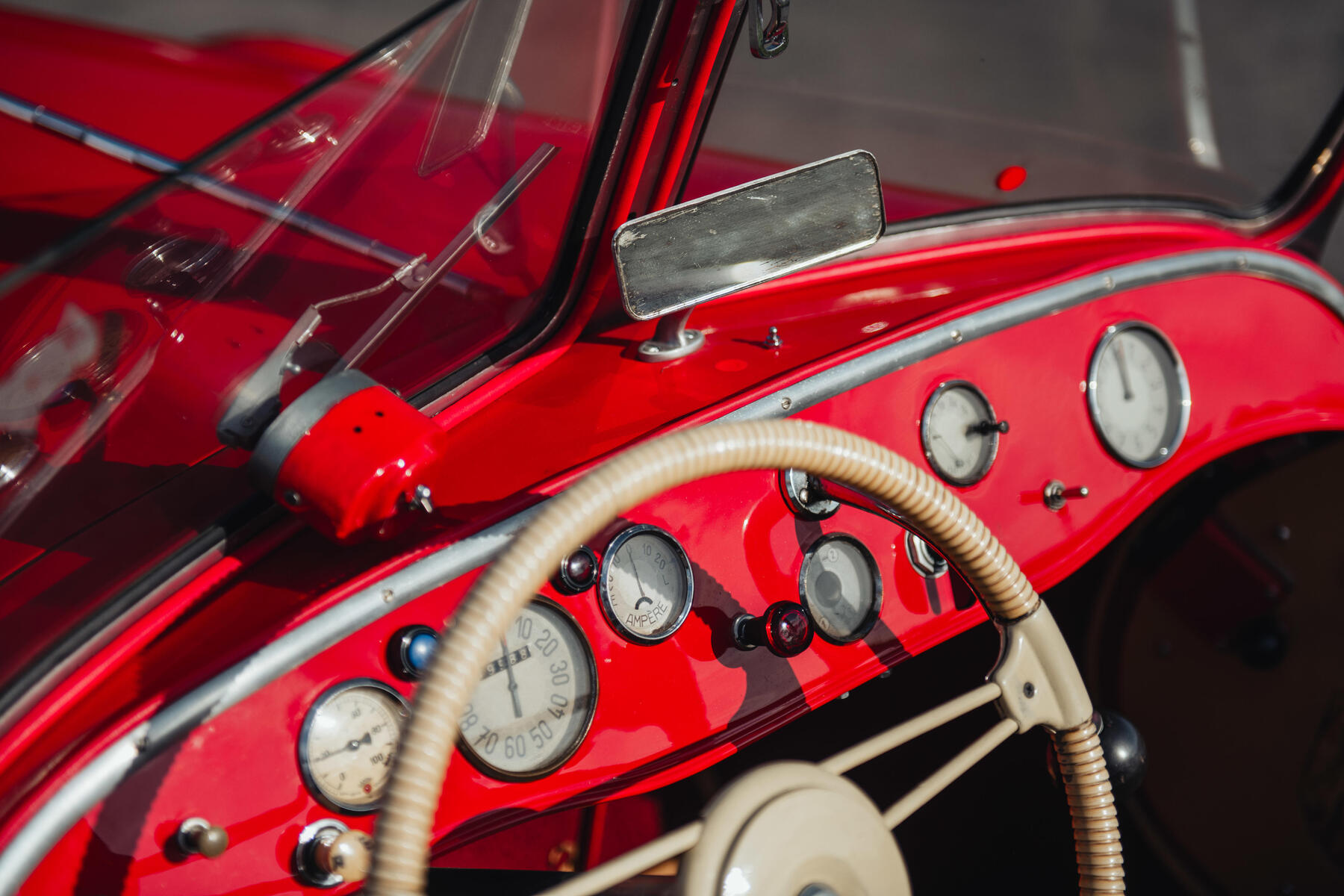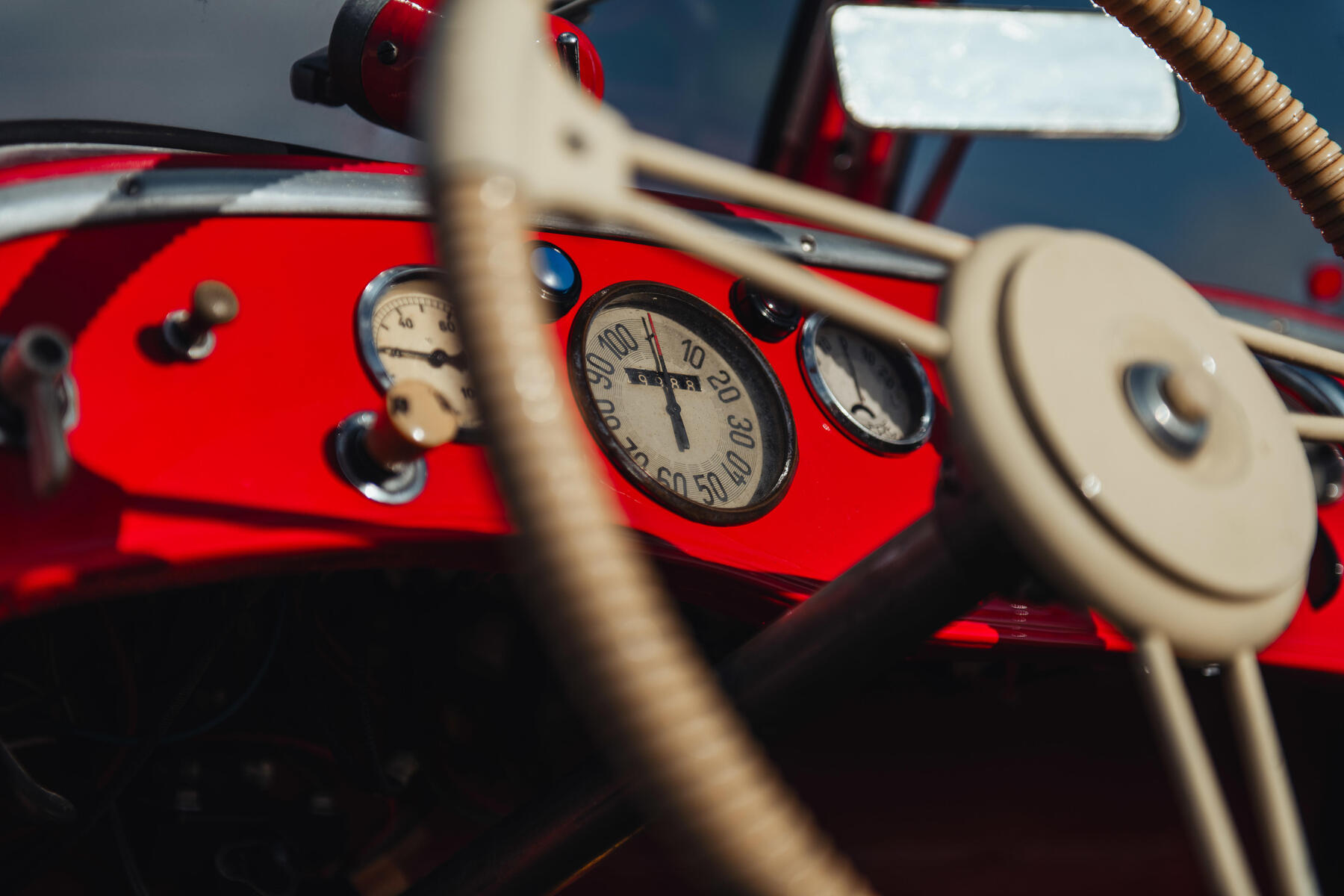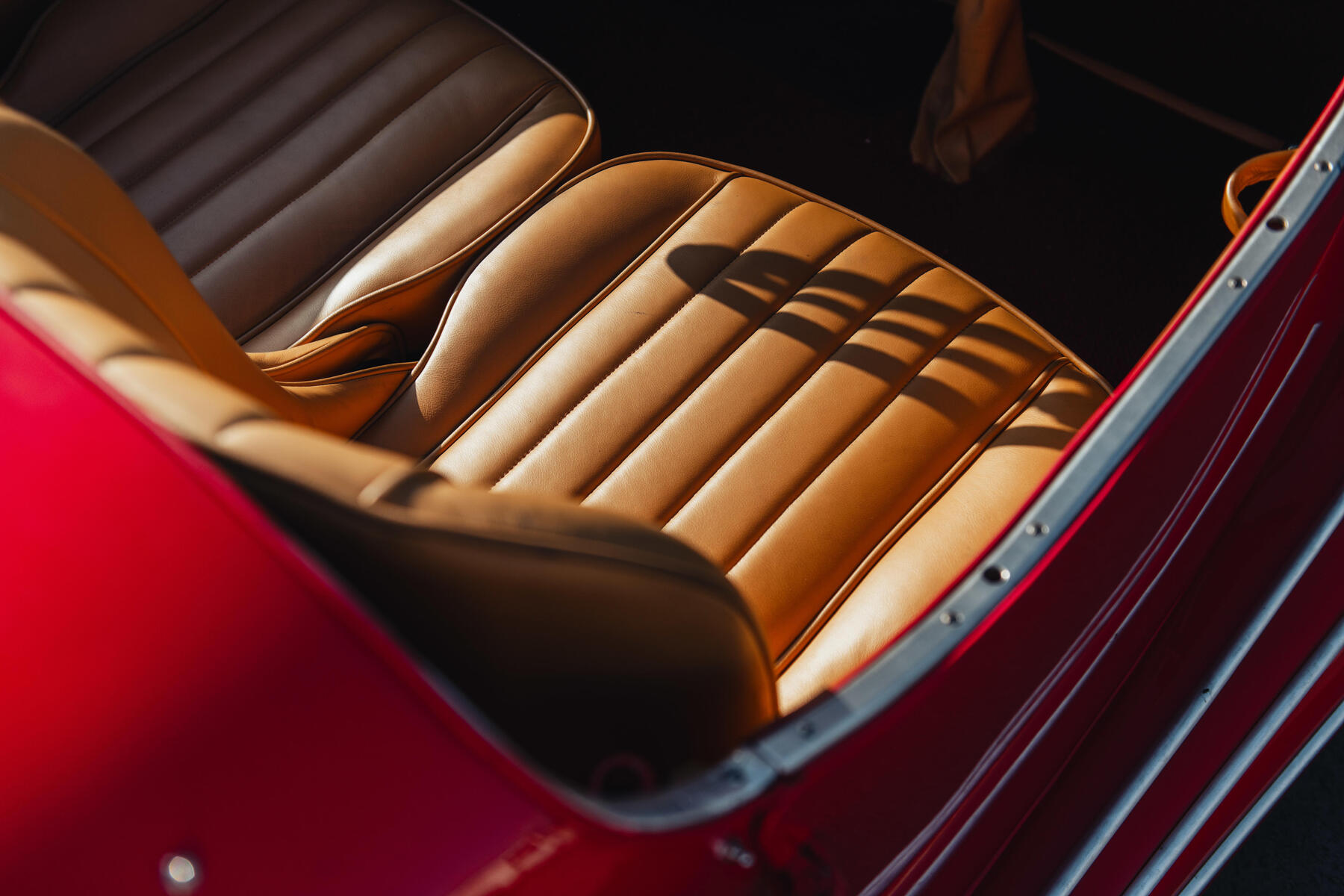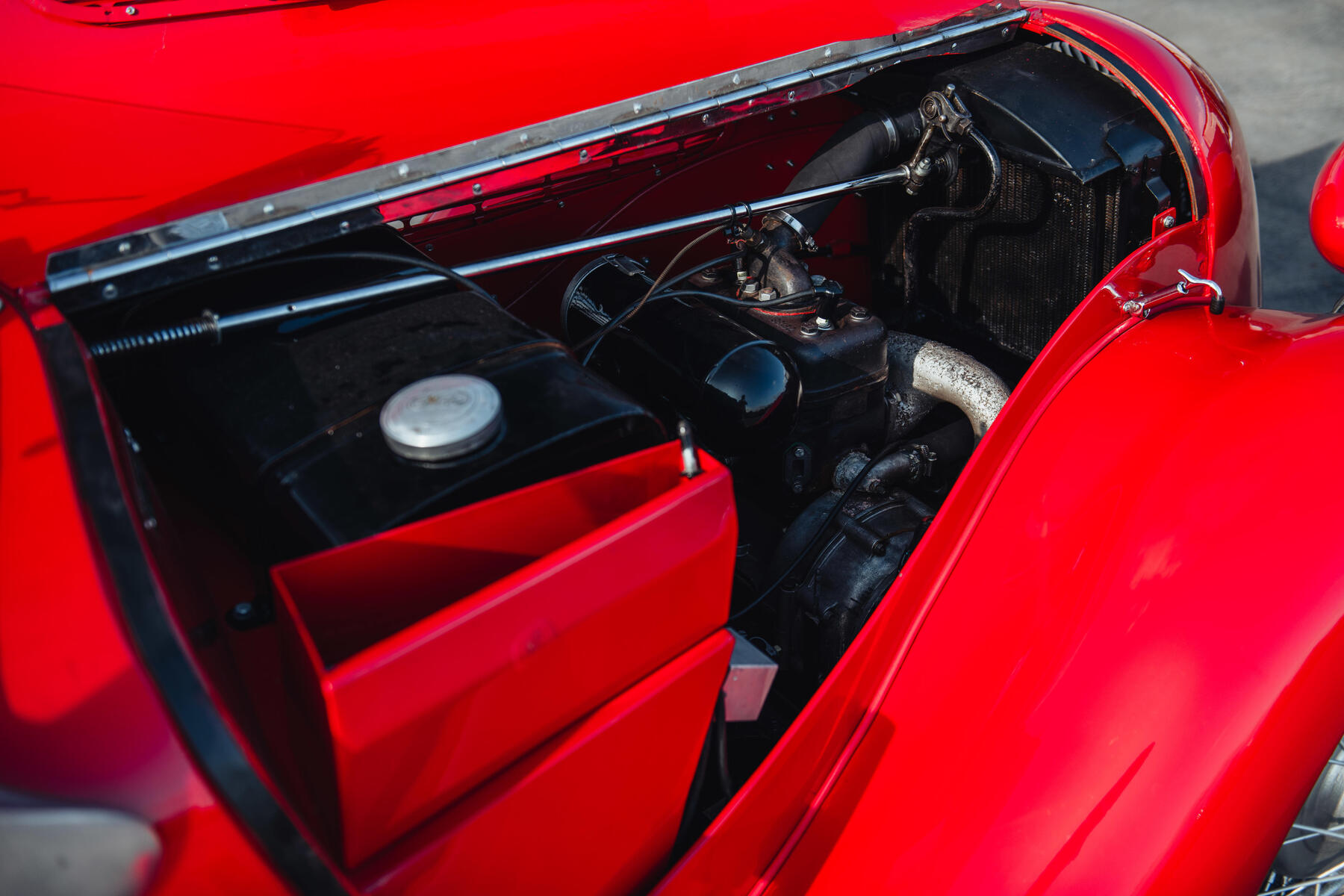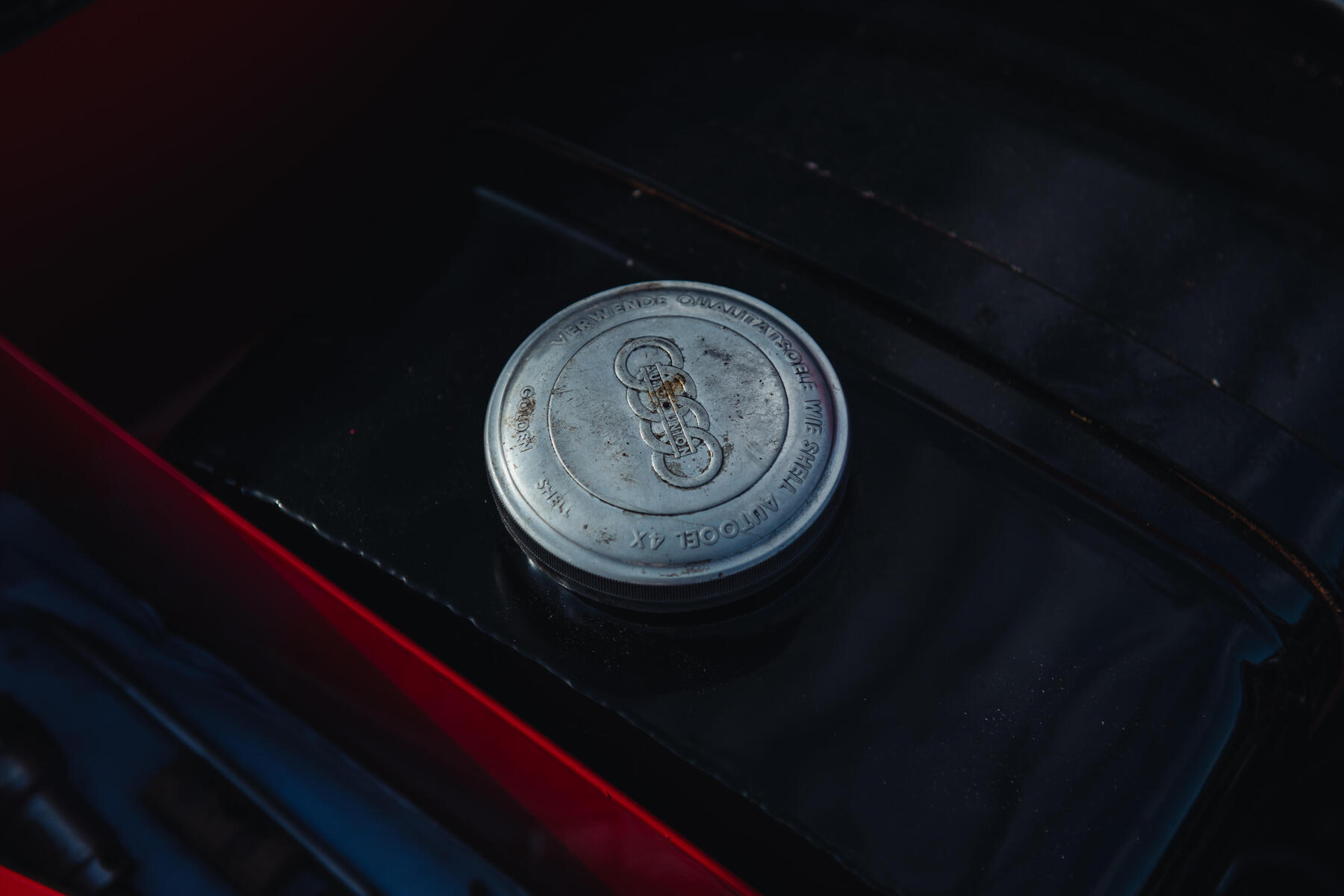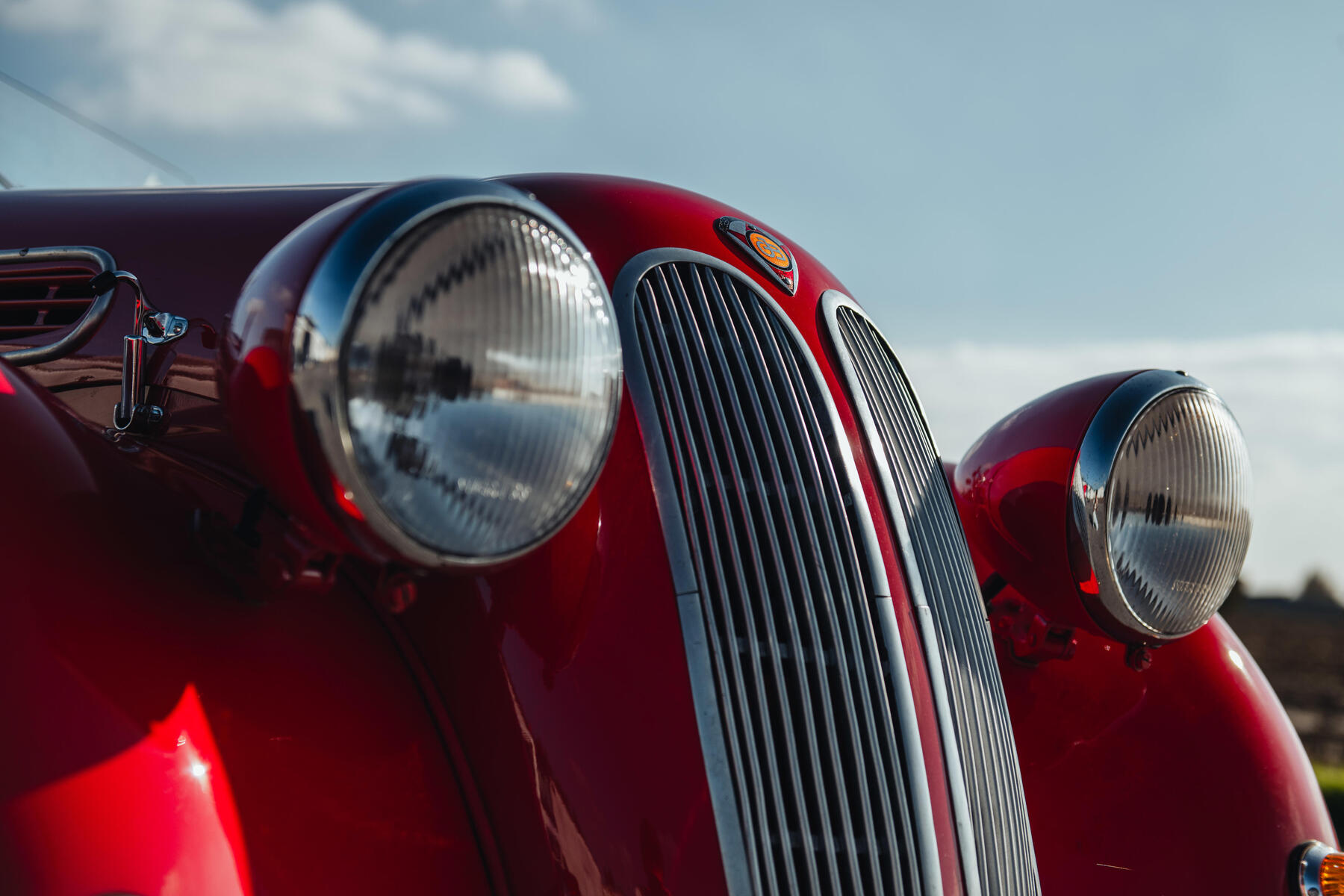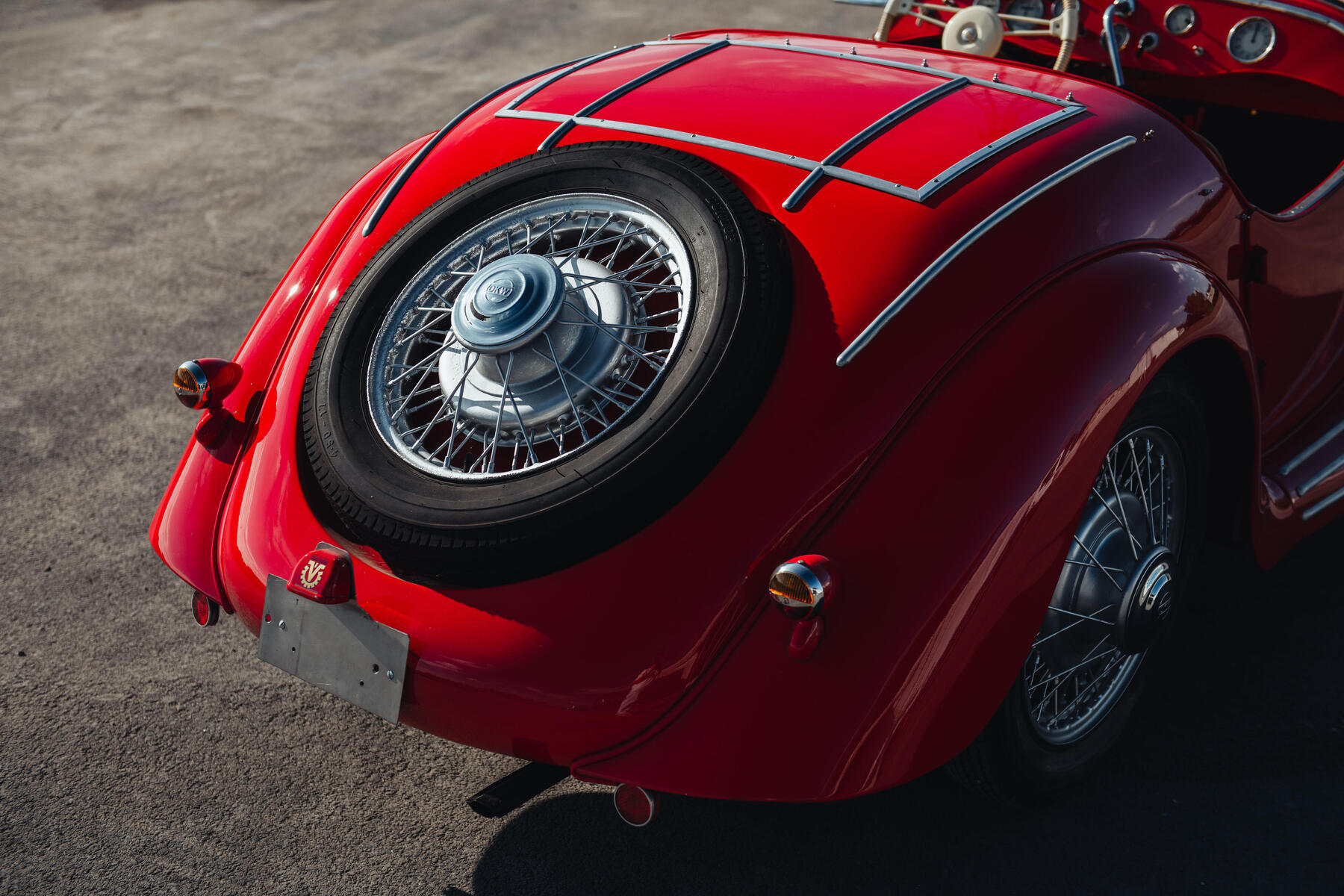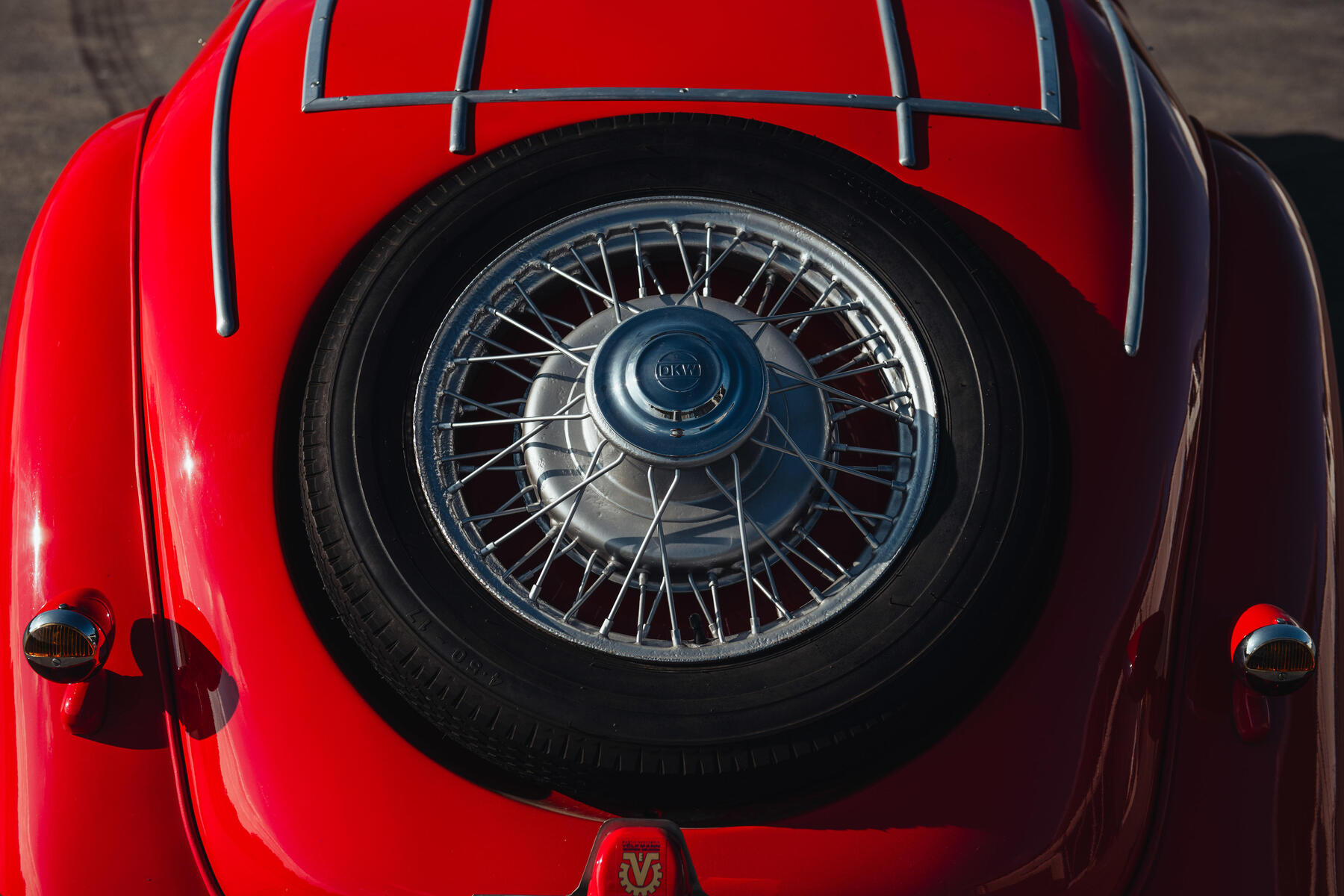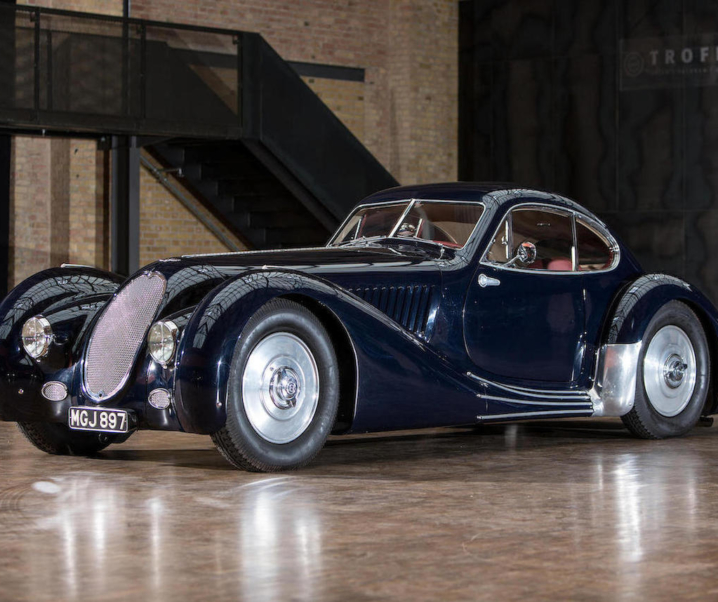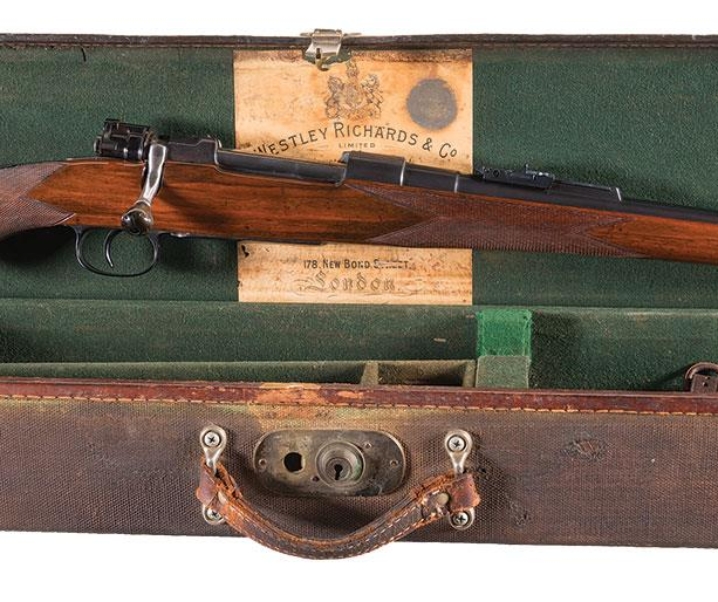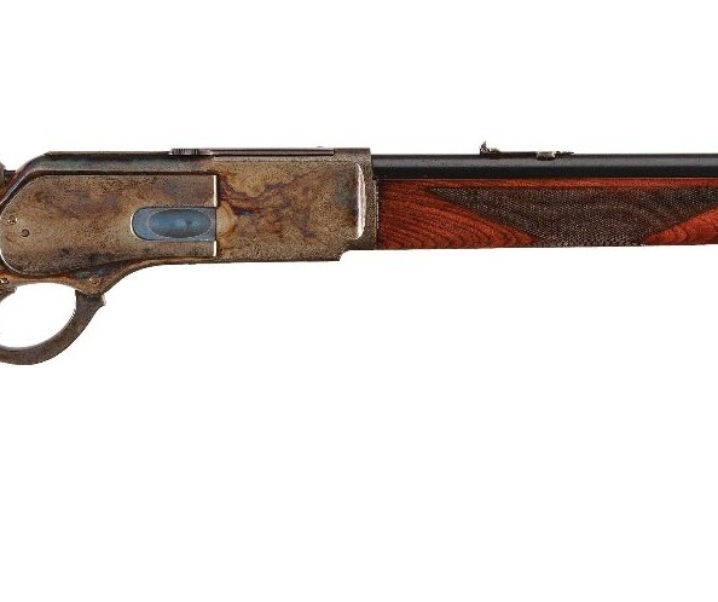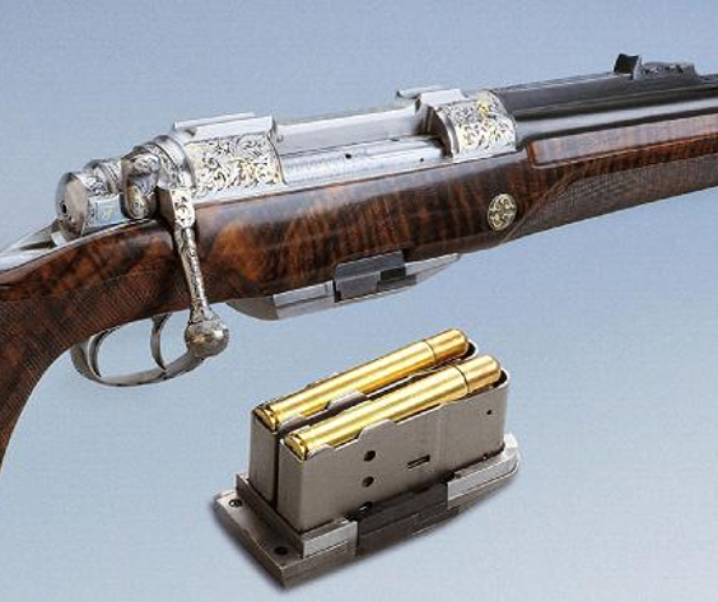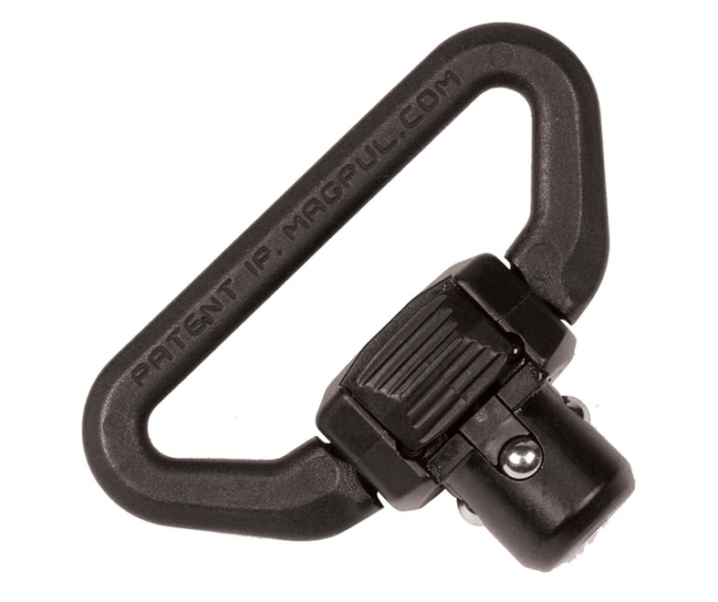The DKW F2 automobile was the second of the company’s front-wheel-drive small cars. Fitted with independent suspension front and rear and powered by a simple but advanced design two-cylinder two-stroke engine the F2 became a popular and respected automobile.
Fast Facts
- DKW began as a motorcycle manufacturer before expanding their business into automobile production in 1928.
- The most outstanding of DKW’s early production cars were their F1 and F2 models, which pioneered front-wheel-drive and a fully independent suspension front and rear.
- These modest two-cylinder, two-stroke motor cars proved to be perfect for Germany in the early 1930’s and DKW became one of the most popular car makers.
- A pretty example of a DKW F2 with coachwork by Gebrüder Ihle Bruchsal is coming up for sale by Bonhams on December 4, 2024.
DKW began as a motorcycle maker in 1919. The company name is imaginative, DKW stands for “Das Kleiner Wunder” which translates from the German as “The Little Wonder”. And a little wonder the company turned out to be by becoming the largest motorcycle manufacturing company in the world by 1930.
Not content with building “Little Wonders” of the two-wheeled variety, DKW ventured into building four wheeled “Little Wonders” in 1928. But both the motorcycles and the automobiles were made to be affordable to purchase, and as easy to maintain as possible.
The early DKW automobiles were 1920’s conventional being front engine and rear-whee-drive. But the 1930’s brought a new zeitgeist to Germany and there was a definite movement towards the creation of cars that would be financially obtainable by a large proportion of the population – this movement ultimately producing the KdF Wagen, later to be re-dubbed the “Volkswagen” (i.e. People’s Car).
DKW were among the pioneers working to create inexpensive automobiles, a strategy that would serve to help the company financially, and which would also serve to make automobile ownership an increasingly common thing in Germany, and in Europe.
DKW’s designers were instructed by the company head Jørgen Skafte Rasmussen to evaluate the conventional design of their cars and to improve on the design concept. Rasmussen wanted the new car to feature front wheel drive and good handling, and he wanted it to use an existing DKW motorcycle engine as its power plant.
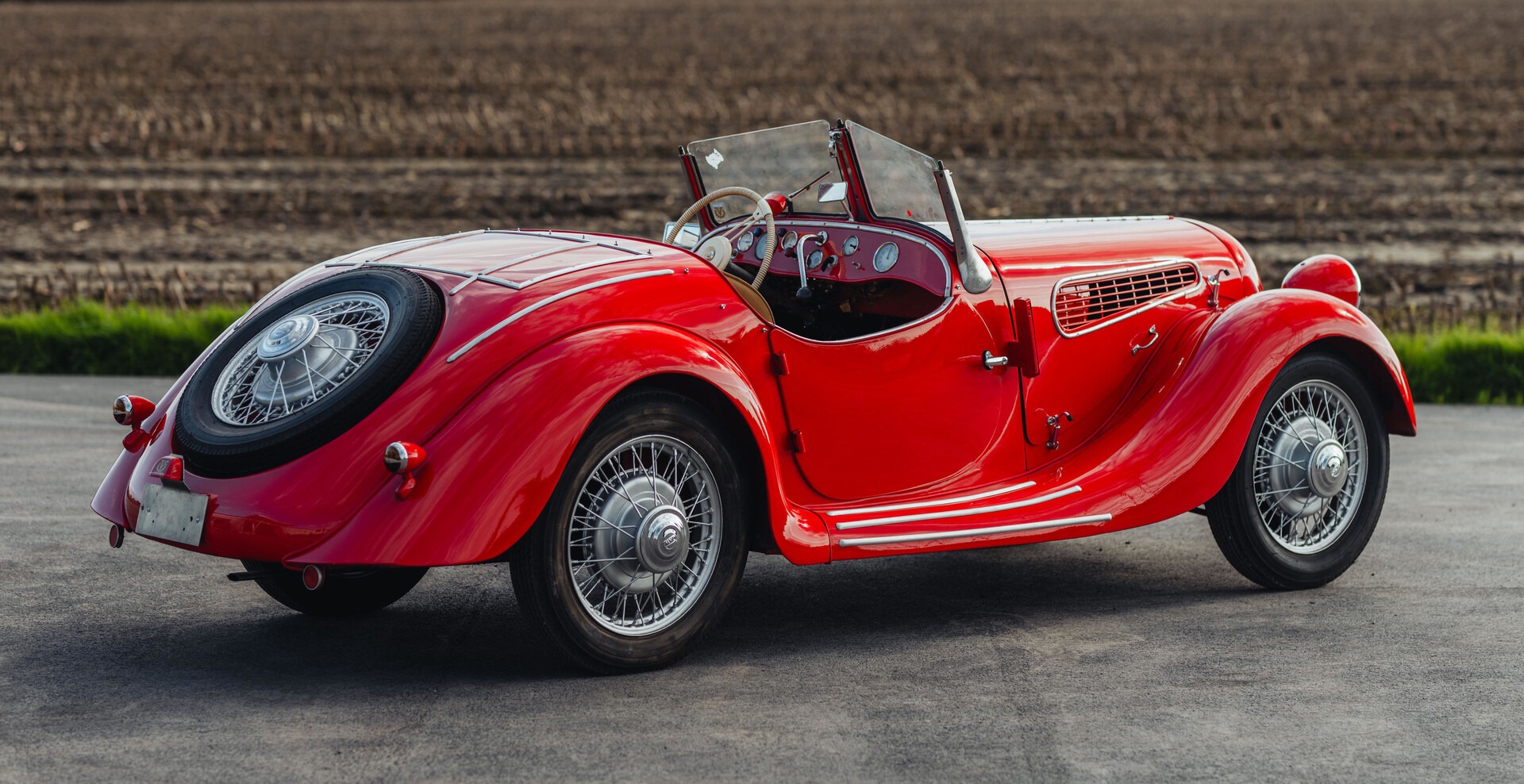
The result of this was the move to a transversely mounted front engine driving the front wheels. This concept essentially forced the need for independent front suspension, and the engineers then chose to incorporate independent rear suspension also.
The engine chosen to power the car was the DKW 494cc two-stroke two-cylinder unit driving via a three speed manual gearbox.
The result of this new design philosophy was a car with much improved handling over its predecessors: a car that delivered an enjoyable driving experience. Importantly this was a car that was small and easy to drive: we should remember that in Germany at that time in history not many people drove motor cars, so making a car that was easy to learn to drive in was a great bonus.
A new driver would have a rather intimidating experience if their first driving lesson was in something large and powerful, like a Mercedes-Benz SS for example.
The new car was small and light tipping the scales at 450kg wet weight with a full 25 liter fuel tank. Bodywork of the first model was of steel.
This car was the DKW F1 and it made its debut at the Berlin Motor Show of 1931.
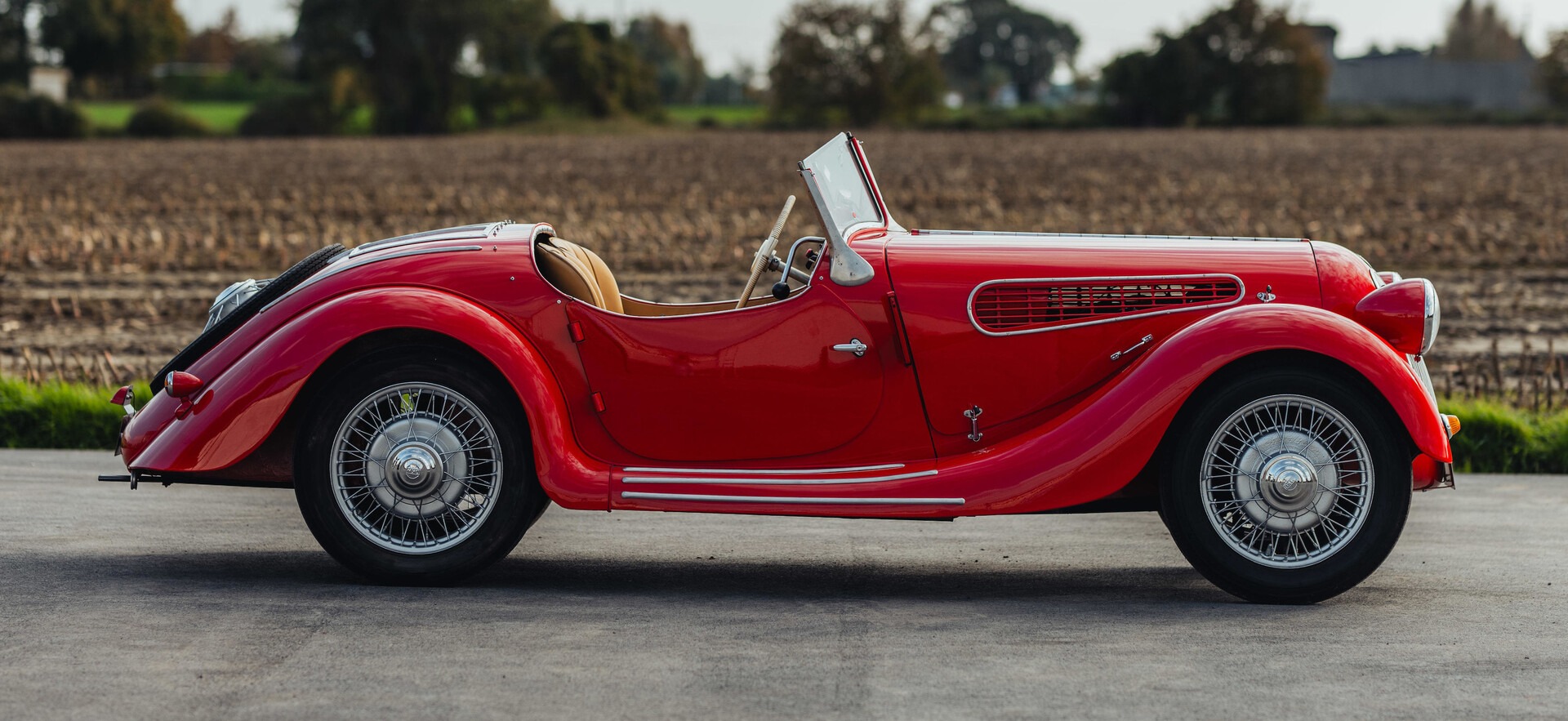
Improvements were made between the F1’s appearance at the Berlin Motor Show and its entering production. The engine was increased in capacity to 584cc and the bodywork was also substantially changed moving from steel construction to a wood frame skinned with imitation leather. In a sense this was quite like aircraft construction at the time.
The F1 was offered in two lengths: 3.1 meters as a two-seater, and 3.4 meters as a four seater.
In 1932 the DKW F1 model was superseded by the improved DKW F2 which was offered as the 3,895 mm (153.3 in) long “Reichsklasse”; or as the “DKW Meisterklasse” as either a 3,955 mm (155.7 in.) long four seater, or a 3,750 mm (148 in.) two seater.
Mechanically the F2 used the same laterally mounted 15hp @ 3,500rpm, 584cc two-cylinder two-stroke engine and three speed transmission as the F1 and this engine was improved in 1933 by the use of Schnuerle porting, which increased power to 18hp.
This porting system was created by Adolf Schnuerle and used two diagonally placed inlet ports either side of a single exhaust port. The resulting gas flow provided a significant improvement in scavenging efficiency.
The F2 series would subsequently be fitted with a larger 692cc two-cylinder engine with Schnuerle porting that delivered 20hp.
1934 DKW F2 Gebrüder Ihle Bruchsal Roadster for Sale
A 1934 DKW F2 fitted with coachwork by Gebrüder Ihle Bruchsal is coming up for sale by Bonhams.
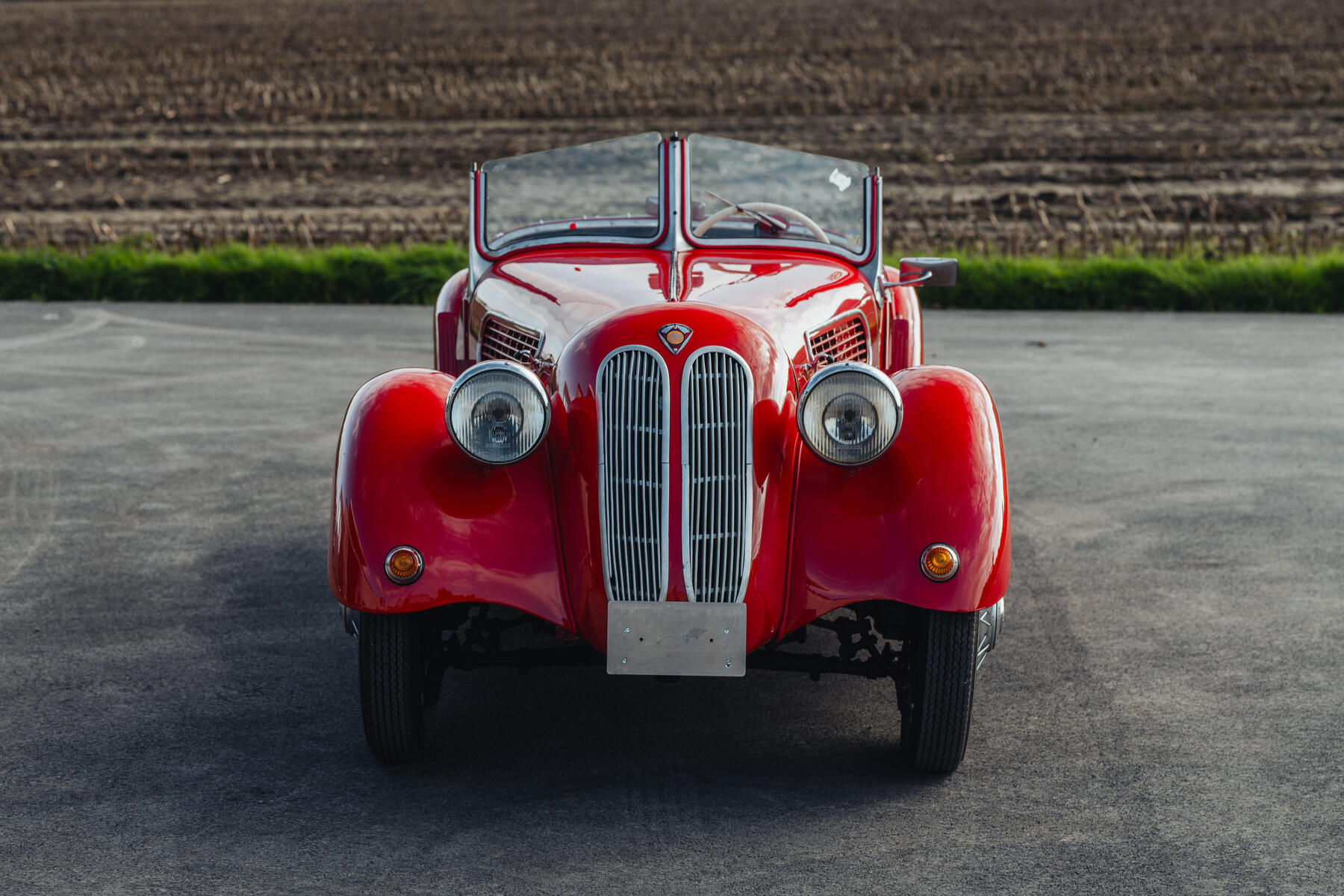
This car is fitted with the 584cc engine and is painted in a rather attractive red complimented by light tan interior.
This is a car that is both visually appealing, and sure to be enjoyable to drive. It has a great deal of classic car character.
Picture Credit: All pictures courtesy Bonhams.

Jon Branch is the founder and senior editor of Revivaler and has written a significant number of articles for various publications including official Buying Guides for eBay, classic car articles for Hagerty, magazine articles for both the Australian Shooters Journal and the Australian Shooter, and he’s a long time contributor to Silodrome.
Jon has done radio, television, magazine and newspaper interviews on various issues, and has traveled extensively, having lived in Britain, Australia, China and Hong Kong. His travels have taken him to Indonesia, Israel, Italy, Japan and a number of other countries. He has studied the Japanese sword arts and has a long history of involvement in the shooting sports, which has included authoring submissions to government on various firearms related issues and assisting in the design and establishment of shooting ranges.


